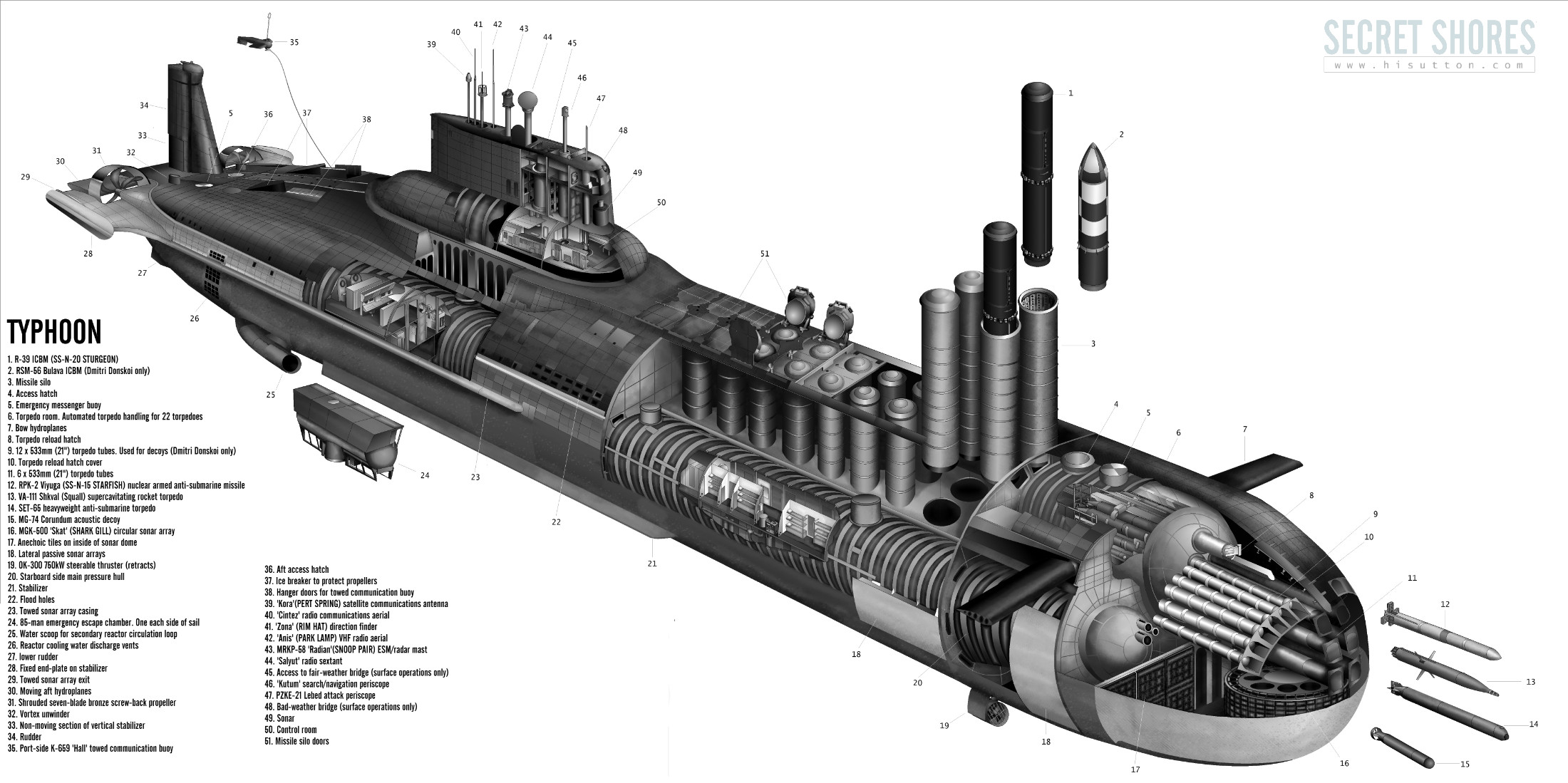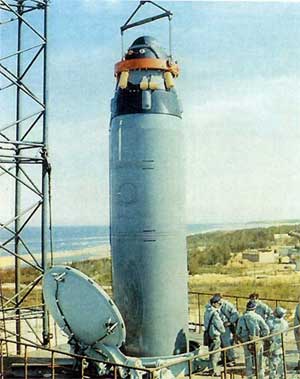The Typhoon ballistic missile nuclear-powered (SSBN) submarines
are the largest submarines ever to be built. They were constructed at the
Severodvinsk Shipyard, on the White Sea near Archangel.
The first of the six members of the class to be commissioned was
TK 208 in 1981, followed by TK 202 in 1983, TK 12 in 1984, TK 13 in 1985, TK 17
in 1987 and TK 20 in 1989. The submarines were stationed with the Russian
Northern Fleet at Litsa Guba.
Of the six, only TK 17 and TK 20 are operational. TK 208 was
relaunched following refit in 2002 and is being used as a trials ship. TK 12
and TK 13 are decommissioned, waiting to be scrapped.
With assistance from the United States, through the cooperative
threat reduction programme, TK 202 has had its nuclear fuel removed by US
funded processing facilities and converted into forms suitable for long-term
storage or reuse. The UK has also agreed to take part in the dismantling of
Russia's decommissioned nuclear submarines.
Design
The Typhoon Class submarine is of multi-hulled design – five
inner hulls are situated inside a superstructure of the two parallel main
hulls. The superstructure is coated with sound-absorbent tiles. There are 19
compartments including a strengthened module which houses the main control room
and electronic equipment compartment which is above the main hulls behind the
missile launch tubes.
The submarine's design includes features for travelling under
ice and ice-breaking. It has an advanced stern fin with horizontal hydroplane
fitted after the screws. The nose horizontal hydroplanes are in the bow section
and are retractable into the hull.
The retractable systems include two periscopes (one for the
commander and one for general use), radio sextant, radar, radio communications,
navigation and direction-finder masts.
They are housed within the sail guard. The sail and sail guard
have a reinforced rounded cover for ice-breaking.
Maximum diving depth is 400m. Speed is 12kt when surfaced and
25kt when submerged. Typhoon is capable of spending 120 days at sea.
The submarine carries 20 RSM-52 intercontinental, three-stage
solid propellant ballistic missiles. The two rows of missile launch tubes are
situated in front of the sail between the main hulls.
Each missile consists of ten independently targetable multiple
re-entry vehicles (MIRV's), each with a 100kt nuclear warhead. Guidance is
inertial with stellar reference updating. Range is 8,300km with accuracy (CEP)
of 500m. The missile weighs 84,000kg at launch and was designed by the Makayev
Design Bureau. It has the NATO designation of SS-N-20 Sturgeon.
In September and December 2005, the Dmitry Donskoy carried out
successful flight tests of a new solid fuel intercontinental ballistic missile,
the SS-N-30 Bulava, being developed for the Russian Navy. Bulava is reported to
have a range of more than 8,000km and to be able to carry a 550kt nuclear
warhead. It is based on the land-launched Topol missile (SS-27). Bulava is to
arm the Russian Navy’s new Borey Class submarines from 2008 and may be
retrofitted to the Typhoon Class.
Torpedoes
Typhoon has four 630mm torpedo tubes and two 533mm torpedo tubes
with a total of 22 anti-submarine missiles and torpedoes of varying types. The
torpedo room is in the upper part of the bow between the hulls. The torpedo
tubes can also be used to deploy mines.
Systems
The sonar is an active / passive search and attack type with the
sonar mounted on the hull under the torpedo room. The submarine is fitted with
I/J-band surface target detection radar.
Countermeaures include ESM (electronic support measures), radar
warning system and direction-finding system.
The submarine has both radio and satellite communications
systems. It is fitted with two floating antenna buoys to receive radio signals,
target designation data and satellite navigation signals, at depth and under
ice cover.
Propulsion
The submarine main machinery consists of two nuclear water
reactors and two turbogear assemblies comprising steam turbine and gearbox. One
reactor and one turbogear assembly are fitted in each main hull.
Each nuclear water reactor produces 190MW. These drive two
50,000hp steam turbines and four 3,200kW turbogenerators. Two 800kW diesel
generators serve as standby propulsion units and are coupled to the shaft line.
The two propellers are seven-blade, fixed-pitch shrouded. The built-in
thrusters on the bow and stern are two telescopic turning screw rudders and are
powered by a 750kW motor.

